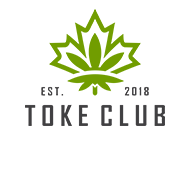Magic Mushrooms
Different Types of Magic Mushrooms and Their Effects
Magic mushrooms, known scientifically as psilocybin mushrooms, have been used for centuries for their psychoactive properties. These fungi contain the compound psilocybin, which, when ingested, is converted into psilocin and interacts with serotonin receptors in the brain. This interaction can lead to profound changes in perception, mood, and thought patterns. There are numerous species of magic mushrooms, each with its own unique effects and characteristics. In this blog post, we’ll explore some of the most well-known types of magic mushrooms and their effects.
1. Psilocybe cubensis
Overview: Psilocybe cubensis is perhaps the most widely known and cultivated species of magic mushrooms. They are relatively easy to grow, making them popular among amateur mycologists.
Appearance: These mushrooms typically have a golden-brown cap that is convex and can grow to be quite large. The stems are usually white or yellowish.
Effects: Psilocybe cubensis is known for its moderate to strong psychoactive effects. Users commonly report visual hallucinations, a sense of euphoria, altered perception of time, and deep introspective experiences. The intensity of the experience can vary depending on the dosage.
2. Psilocybe semilanceata (Liberty Caps)
Overview: Psilocybe semilanceata, commonly known as Liberty Caps, is one of the most potent species of magic mushrooms. They are typically found in grasslands, especially in Europe and North America.
Appearance: Liberty Caps have a distinctive conical or bell-shaped cap with a small nipple-like protrusion on top. The caps are usually light brown and the stems are long and slender.
Effects: Due to their high psilocybin content, Liberty Caps can produce intense visual and auditory hallucinations, profound changes in thought patterns, and strong emotional experiences. They are often described as providing a more “cerebral” trip compared to other species.
3. Psilocybe cyanescens (Wavy Caps)
Overview: Psilocybe cyanescens, or Wavy Caps, are known for their high potency and distinctive wavy cap edges. They are commonly found in wood chips and mulched garden beds, particularly in temperate climates.
Appearance: These mushrooms have a caramel-colored cap with wavy edges, giving them a unique appearance. The stems are usually thick and white, often bruising blue when handled.
Effects: Wavy Caps are very potent and can induce strong visual hallucinations, a profound sense of connection with the surroundings, and deep emotional and spiritual experiences. Users often report a sense of clarity and insight.
4. Psilocybe azurescens
Overview: Psilocybe azurescens is one of the most potent magic mushroom species known. They are native to the West Coast of the United States, particularly in the Pacific Northwest.
Appearance: These mushrooms have a caramel to chestnut-brown cap that becomes more pronounced as they mature. The stems are sturdy and white, often bruising blue.
Effects: Due to their high psilocybin and psilocin content, Psilocybe azurescens can produce very intense psychedelic experiences. Users often report strong visual and auditory hallucinations, a sense of profound unity, and deep philosophical insights. These mushrooms are not recommended for beginners due to their potency.
5. Psilocybe mexicana
Overview: Psilocybe mexicana is historically significant, as it was the species from which psilocybin and psilocin were first isolated by Albert Hofmann. These mushrooms are native to Central and South America.
Appearance: Psilocybe mexicana has a small, conical to bell-shaped cap that is light brown to straw-colored. The stems are slender and can bruise blue when handled.
Effects: These mushrooms are known for producing milder and more manageable experiences, making them suitable for beginners. Users often report mild visual hallucinations, euphoria, and a heightened sense of creativity and connection.
6. Psilocybe tampanensis (Magic Truffles)
Overview: Psilocybe tampanensis is unique because it produces sclerotia, commonly known as “magic truffles.” These are dense, underground fungal masses that contain psilocybin.
Appearance: The truffles are small, dense, and typically dark brown or black. They grow underground and are harvested for their psychoactive properties.
Effects: Magic truffles produce effects similar to other psilocybin mushrooms, including visual and auditory hallucinations, emotional introspection, and a sense of connection. The experience is generally milder than that of Psilocybe cubensis, making truffles a good option for beginners or those seeking a less intense trip.
Magic mushrooms offer a wide range of psychoactive experiences, varying significantly in potency and effects depending on the species. From the easily cultivated Psilocybe cubensis to the highly potent Psilocybe azurescens, each type of magic mushroom provides unique opportunities for exploration and personal insight. As always, it is important to approach the use of magic mushrooms with respect and caution, understanding the legal implications and potential risks involved. Whether you’re a seasoned psychonaut or a curious newcomer, the world of magic mushrooms offers a rich and diverse tapestry of experiences waiting to be explored.

